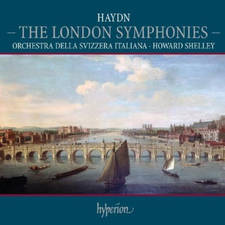Andrew Pearce: Cinema Symphony – Great film music without a film
There are elements of John Williams and other classic movie composers in Andrew Pearce's 'Cinema Symphony' - but its scale and duration make it an extended feast for film music lovers.
For a number of the greatest film composers, working on movies was just a highly lucrative means to pay the bills; what they really wanted to do was write for the concert hall. Take the great Erich Wolfgang Korngold for example. Considered to be a ‘musical genius’ by Mahler, Korngold’s ‘serious’ composing career was ultimately derailed by his years in Hollywood. After giving up writing for film, however, he was never able to revive interest in his concert music, even meeting with critical disdain. And to this day, Ennio Morricone maintains his primary goal has been to write for the concert hall. He continues to compose music that serves no other purpose than to exist for its own sake.
One curious element of the concert music that movie composers often write is that it doesn’t often sound like their film music. John Williams has written numerous concertos, orchestral and chamber works, but in a modernist, often atonal, style that bears little resemblance to his sumptuous scores. It’s surprising that composers who understand the power and beauty of great melodies often reject them in their concert works as if the pieces won’t be taken seriously if they are too accessible.
That’s certainly not the case with Andrew Pearce’s Cinema Symphony. Written over a period of six years, the work is an affectionate homage to Hollywood’s epic film scores and revels in a sound world not a million miles away from the classic soundtracks of Williams or Jerry Goldsmith. Pearce – who received a Masters at the Royal College of Music in Composition for Screen – has mainly worked as an arranger but here he has created a major symphonic work that has all the passion, flair and drama of film music but with the possibility of developing themes and musical structure as you would for a major concert work.
The influence of Williams is strong in the first movement, marked 'Pastorale - Fanfare - Scherzo'. Then there’s more than a little nod to Bernard Herrmann’s Hitchcock scores in the second movement, 'Lento Misterioso’. The third movement draws inspiration from Goldsmith, and Pearce returns to Williams-style motifs for the final movement. There are also passages that sound somewhat like Debussy and Ravel – but that’s not surprising since the two Frenchmen exerted such a strong influence on the music of the movies.
What Cinema Symphony offers is a modern orchestral work that has all the excitement and emotion of great film music on a scale and with a duration that allows the listener to get to grips with it and really get immersed in it. And the pictures it creates in the mind makes you wish for a film to go with it.






















